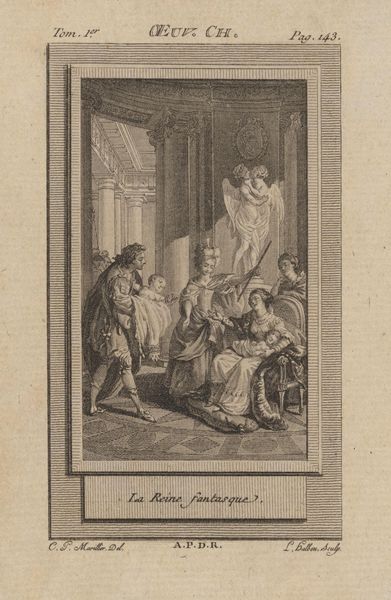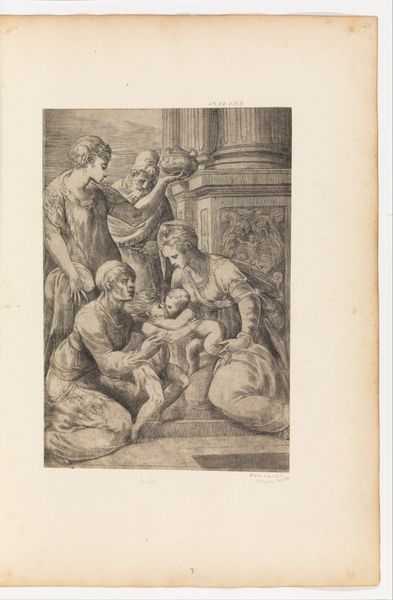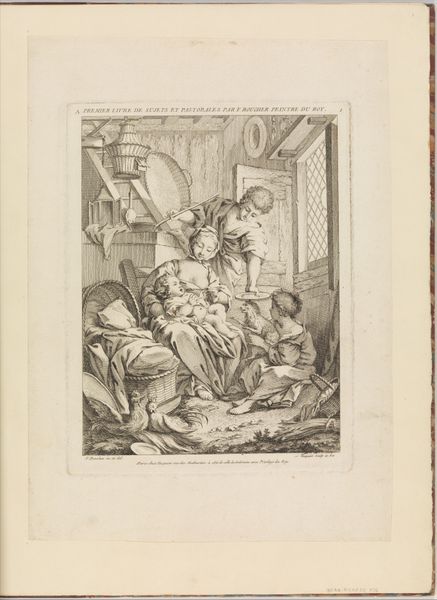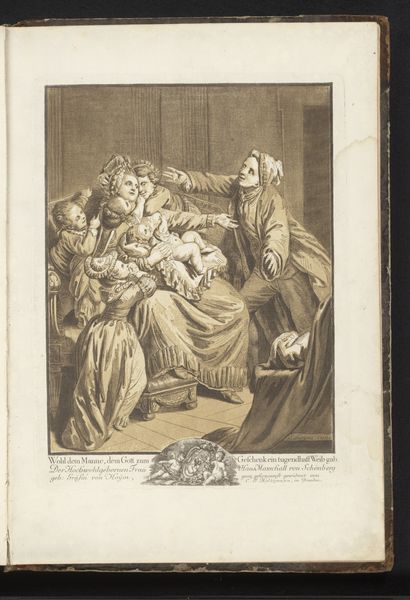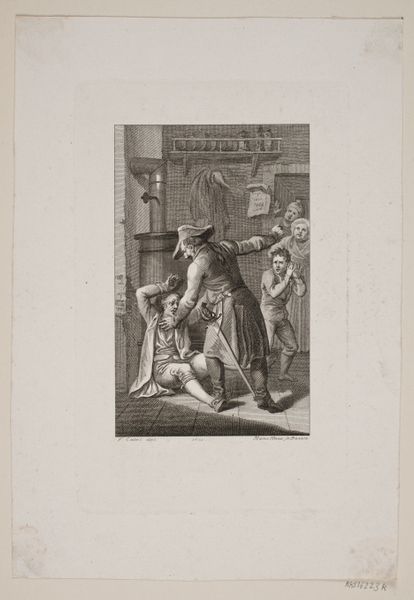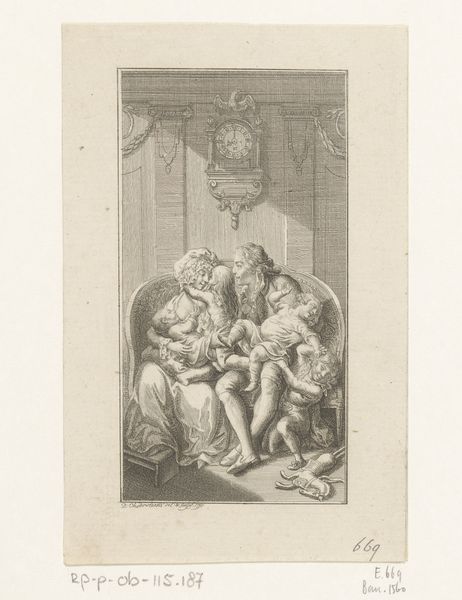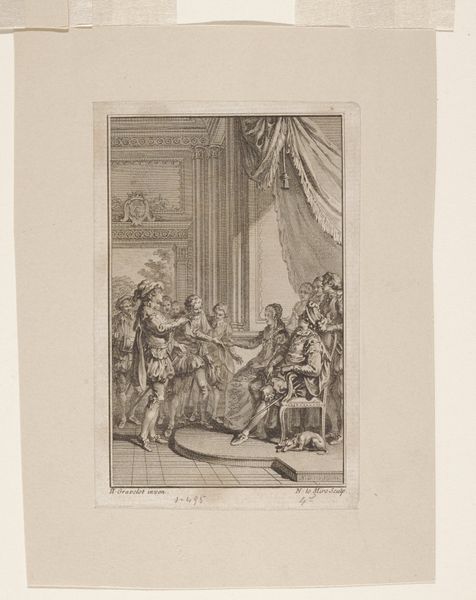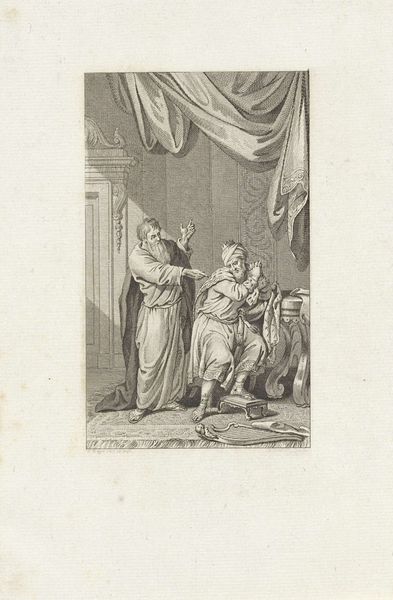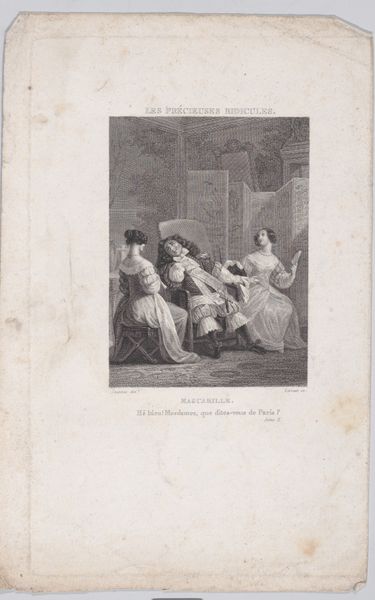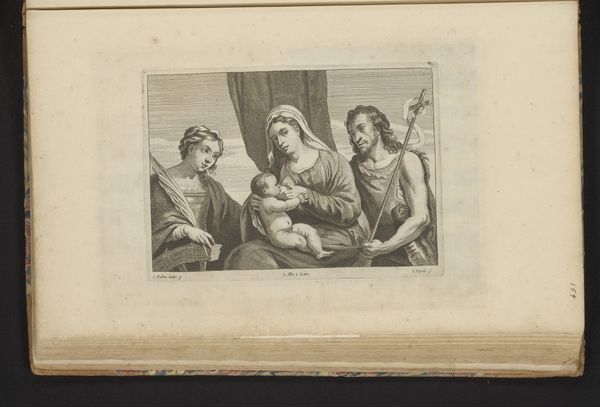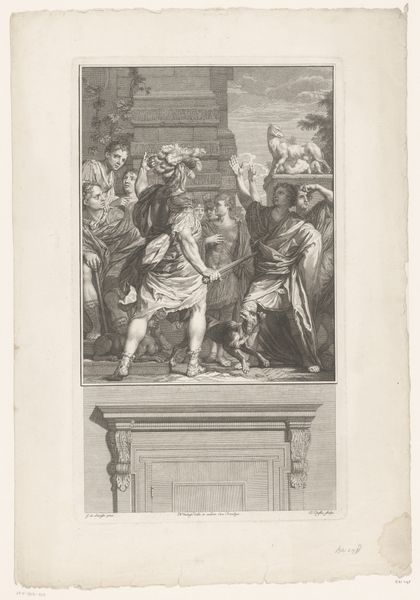
print, engraving
#
neoclacissism
# print
#
figuration
#
history-painting
#
engraving
Dimensions: 183 mm (height) x 119 mm (width) (plademaal)
Curator: This print, made around 1805 by Meno Haas, is called "Josef giver sig til kende for sine brødre," which translates to "Joseph reveals himself to his brothers." It’s housed here at the SMK. Editor: It has a certain static, almost theatrical quality, doesn’t it? The high contrast engraving emphasizes line over tone. The stark lighting flattens everything and contributes to the rigid atmosphere. Curator: Exactly. It’s a prime example of Neoclassical aesthetics at play. These prints circulated widely and transmitted both moral messages and specific political sensibilities in the wake of revolutions. Joseph's forgiveness can be read as a lesson in reconciliation during periods of social upheaval. Editor: You can certainly see that intent, especially given the symmetry and structured composition. The artist uses a shallow depth of field, which directs our focus towards the embracing figures of Joseph and Benjamin. Also note the figures flanking them are rigidly organized. Curator: Right, notice how the architecture adds to that sense of controlled drama. The pillars and the geometric ornamentation reinforces this environment. It is about instilling certain ideas of order in both personal and political conduct, especially given Joseph’s role as a political leader. Editor: The work also exemplifies Neoclassical fascination with line as the dominant element of visual order, relegating other visual tools to subsidiary status. The cross-hatching creates only limited tonal variation, yet does so in a way that enhances both the texture of garments and emotional qualities on display. Curator: It definitely portrays the moral framework that defined that time and tried to inform political decision-making and shape citizen behavior. Editor: A framework achieved using highly codified conventions of depiction. Despite the story’s inherent drama, that sense of stillness ultimately resonates most. Curator: Thinking about the piece’s historic context makes it interesting in light of the public functions art served at that moment in European history. Editor: While from a formal perspective, this is a really great lesson on how engravings can evoke dramatic sentiment without the rich painterly toolkit we so often value today.
Comments
No comments
Be the first to comment and join the conversation on the ultimate creative platform.
